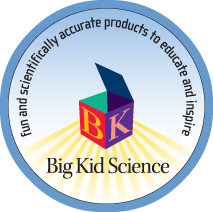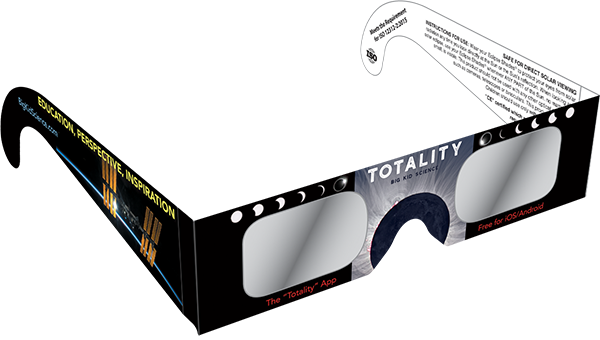The free Totality app was created by Big Kid Science, which subsequently donated the app to the American Astronomical Society (AAS).
For additional eclipse information beyond what you find within the Totality app, please visit the American Astronomical Society (AAS) Eclipse Pages (eclipse.aas.org).
Safe Viewing Warning
Unless you are wearing special eclipse glasses, do not look directly at the Sun during the partial phases of the eclipse. It is still unsafe even when the Sun is more than 99% covered by the Moon. The only time it is safe to look toward the Sun without eclipse glasses is when it is covered completely during totality for those on the path of totality.
Basic Eclipse Observing
Young child warning: Young children ordinarily won’t stare at the Sun because it hurts too much. However, as sunlight dims during a partial eclipse, it will not hurt as much as normal. As a result, you must closely monitor children to make sure they do not risk damaging their eyes by staring at the Sun during the partial phases of the eclipse.
You know it’s not safe to look directly at the Sun on a normal day, and eclipse day is no different. This means you have two basic options for observing a solar eclipse:
- Use a projection technique, such as shining sunlight through pinholes in a sheet of paper onto the ground, so that you can watch the progress of the Sun without looking directly at the Sun. Projection techniques are discussed in our “See Totality!” video introduction.
- Use proper eye protection that is specially designed to allow you to look safely at the Sun. Do not use ordinary sunglasses or any other type of homemade filter! You will know your eye protection is safe if it is certified to meet the “ISO 12312-2 international standard” — but even then, it is safe only if it is undamaged and unscratched. Fortunately, this eye protection is inexpensive and readily available, but be sure you get them only from vendors on the American Astronomical Society’s reputable vendor list (because some other vendors have been found to be selling fake glasses that won’t protect you). The “Totality App” eclipse glasses are one option to consider (you will see that Big Kid Science is on the reputable vendor list). Note: Young children may do better with hand-held “solar viewers” than with standard eclipse glasses, which may be too large for their heads.
For additional information about Safe Viewing, we recommend this page from the American Astronomical Society.
Eclipse Observing with Binoculars, Telescope, or Camera
All the same safety warnings apply if you want to view the eclipse with binoculars, a telescope, or a camera, but in addition, you must protect the optics of your viewing instrument. This means you will need to purchase safe “solar filters” for your instrument. Once the filters are installed, you again have two basic options:
- Look through the instrument (binoculars, telescope, camera) toward the Sun. Again, be sure the solar filters are properly installed, and that your no other sunlight is coming through anywhere into your eyes.
- Hook up a camera that will allow you to project the image onto a computer or other screen.
For additional information on solar filters and where to buy them, we recommend this page from the American Astronomical Society.
Eclipse Photography
First, if you will be on the path of totality and are thinking about trying to photograph the total eclipse, our basic recommendation is to skip it unless you are a professional photographer. Why? Because you will only have a minute or two of totality, and you don’t want to miss out on this awe-inspiring experience because you are fiddling around with a camera.
That said, if you insist on trying to take your own pictures, you should study and prepare beforehand. Try starting with this excellent guide from the American Astronomical Society.

